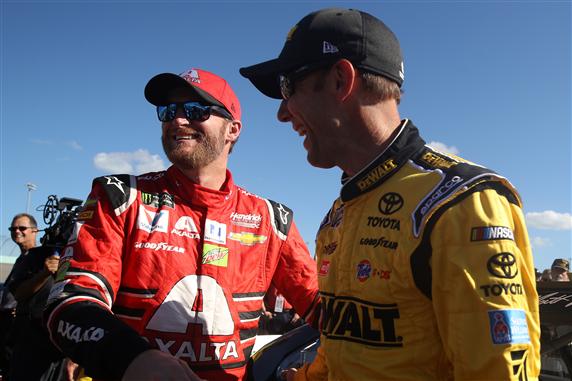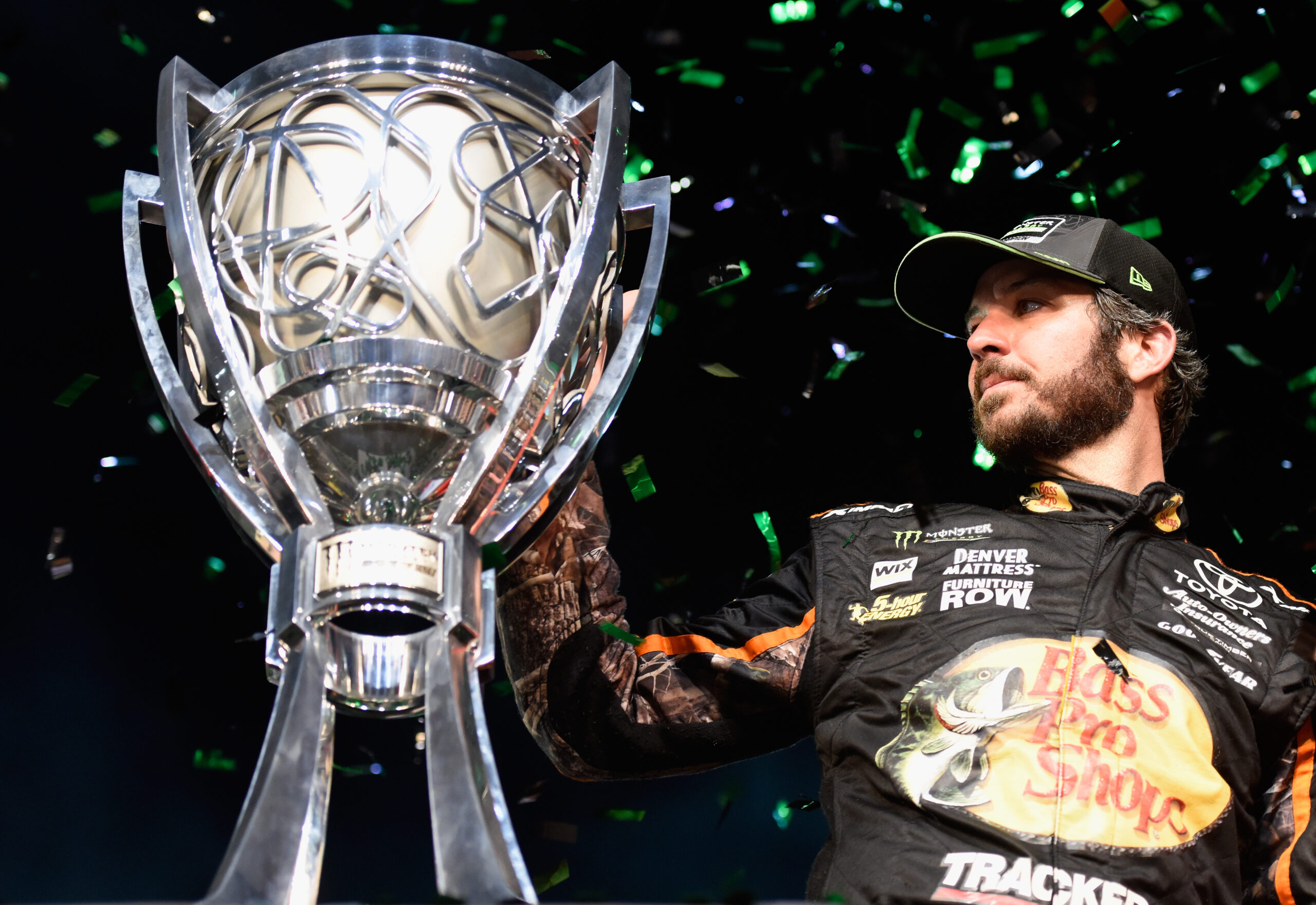As we wrapped up our interview, Tolsma spoke about the sacrifices he made in order to compete at racing’s highest level. He also gave his insights on the future of the sport.
“Prior to winning that race (at Mesa Marin Raceway) I had given racing my all,” Tolsma said. “For three years of our life my wife Tiiffanie and I drove 751 miles from Boise, Idaho to California and home Sunday 31 times a year to race at a higher level. We sold everything we owned to move to Indiana to give racing full time a shot. We basically left Indiana on a moment’s notice to move to North Carolina where we lived above the shop, walked across the shop floor to watch TV in the transporter, and did laundry in the fabrication area of the shop. We did this to pursue a dream, to lay it all out there and hope. When I saw the checkered flag, it was all worth it, I had accomplished the dream.”
Nowadays in Randy’s career, he is working in an automotive company and is making his son’s dream come true.
“I am Vice President of Operations for an automotive marketing company called AMCI,” Tolsma said. “AMCI specializes in 3 areas – AMCI Live is experiential marketing, creating campaigns that transform opinion, create advocacy, and drive dealership traffic, AMCI Testing that provides vehicle evaluations that discover product truths, and certify thousands of claims. And thirdly, AMCI Inside which are experts in product education and launches, pioneers in culture change initiatives and dealership performance.
“On a personal front I support my son’s dream. Elijah is in his sophomore year of high school now and is a remarkable student carrying a 4.33 GPA. He loves baseball, likely more than I loved racing. He is a pitcher, middle infielder and plays outfield. He plays on one of the top tier programs in the country and will likely be a four-year starter on his high school team. The odds to play college or pro ball are slim, but so were the odds for a guy out of Idaho to make it as a race car driver with nothing more than heart.”
If the opportunity rose again to drive in the truck series, Randy would definitely like a chance to revive himself again.
“I drive laps every day in my head and still dream, so yes,” he says. “I would like to redeem myself for the last starts that were not my best. Funny, I might be older but I think I have become wiser which would have me attack it all in a much different way.”
Tolsma still follows the Truck Series somewhat and has his own thoughts on how the series is now, and possibly what he might change if he were to be in charge.
“I do follow it all, maybe not at the level I once did, but I follow,” he said. “It’s changed from what once was a landing and launching series for those who earned it because years of success to a launching series to the young guns on the fast track. When I was making my way through my career, age 36-40 was a driver’s prime, so you spent years cultivating your skills. Now if you have not made it in your early to late 20s, it’s all over. So the series moves the drivers through much sooner.
“I am not sure if that is good or bad, but different. It does scare me more for the short track series around the country. No longer is there drivers spending years of time, building a name and following in whatever series that might be. I listed a plethora of names above and with those names came followers because they had watched them develop. You had fans follow and fans love a series because they were watching the next possible superstar. With the short amount of time drivers spend at the sort tracks, it is less time for fans to connect.”
The one thing that he would get back in place is the halftime breaks and racing at other tracks.
“I would go back to halfway breaks and try to get back to supporting the short tracks with the series,” Tolsma said. “This would give the Truck Series its own identity, which is now all under one umbrella of NASCAR. When you see the lineup for the weekend at a track, what’s different other than the look of the cars? Same teams run up front, many of the same drivers, and the same format. The trucks were once different and made changes when people only wanted more of the same. Now we see that the fans only seem to care about the elite, so the trucks need to differentiate themselves to be unique like we once were.
“I am not a genius on how to cut costs, but it must be done for both the teams and the smaller tracks to host. The other thing missing is a way for the non MENCS (Monster Energy NASCAR Cup Series) affiliated engine builders to compete with the factory supported programs.
“I would also like to see NASCAR hire an outside marketing agency to help build a case for why marketing dollars should be spent with these race teams. The smaller teams have no real shot nor a true understanding how to present themselves to a company. I don’t mean that as a condescending statement, but marketing, social media tracking, influencers, creators, social listening, metrics are all a science. It’s not simply only about the mentions on TV, or the championship banner in the shop. This is a complicated story, yet NASCAR has a supportive, passionate and loyal fan base that many marketers crave.
“NASCAR should be helping fund the cost of an outside agency. Racing is a quality investment for the right sponsors, and the truck level is a fantastic offering. The amount of money needed for sponsorship, for the exposure, is a great value. Sadly, the sport is still seen through one lens, from those within the sport looking out, and possible companies looking in. I have been on both sides, seen it from the innermost circle and seen if from a total outsider’s perspective. It’s not broken, but needs fresh outside thinking and there are some incredible companies that could help.”
With Tolsma’s career over for right now, there are many things he misses about being a racecar driver.
“I am commonly asked what I miss about racing,” he said. “I miss the checkered flag, because at the end of the day you know if it was a good day or a bad day. If your race ended well you celebrate and I mean really celebrate the good times. In life and business, we don’t celebrate minor success like we should. If the race was bad, you know what you need to do, you have goals set and you work to achieve those goals. In real life, we go through it and sometimes my work day is just a work day, not really knowing if it’s good or bad.
“The checkered flag signified more than the conclusion, sometimes it signified a new start.”
You can follow Randy Tolsma on Twitter at @rtolsmaamci.








I remember meeting him at Flemington back in 1998, he’s a good guy, glad to see he’s doing well!